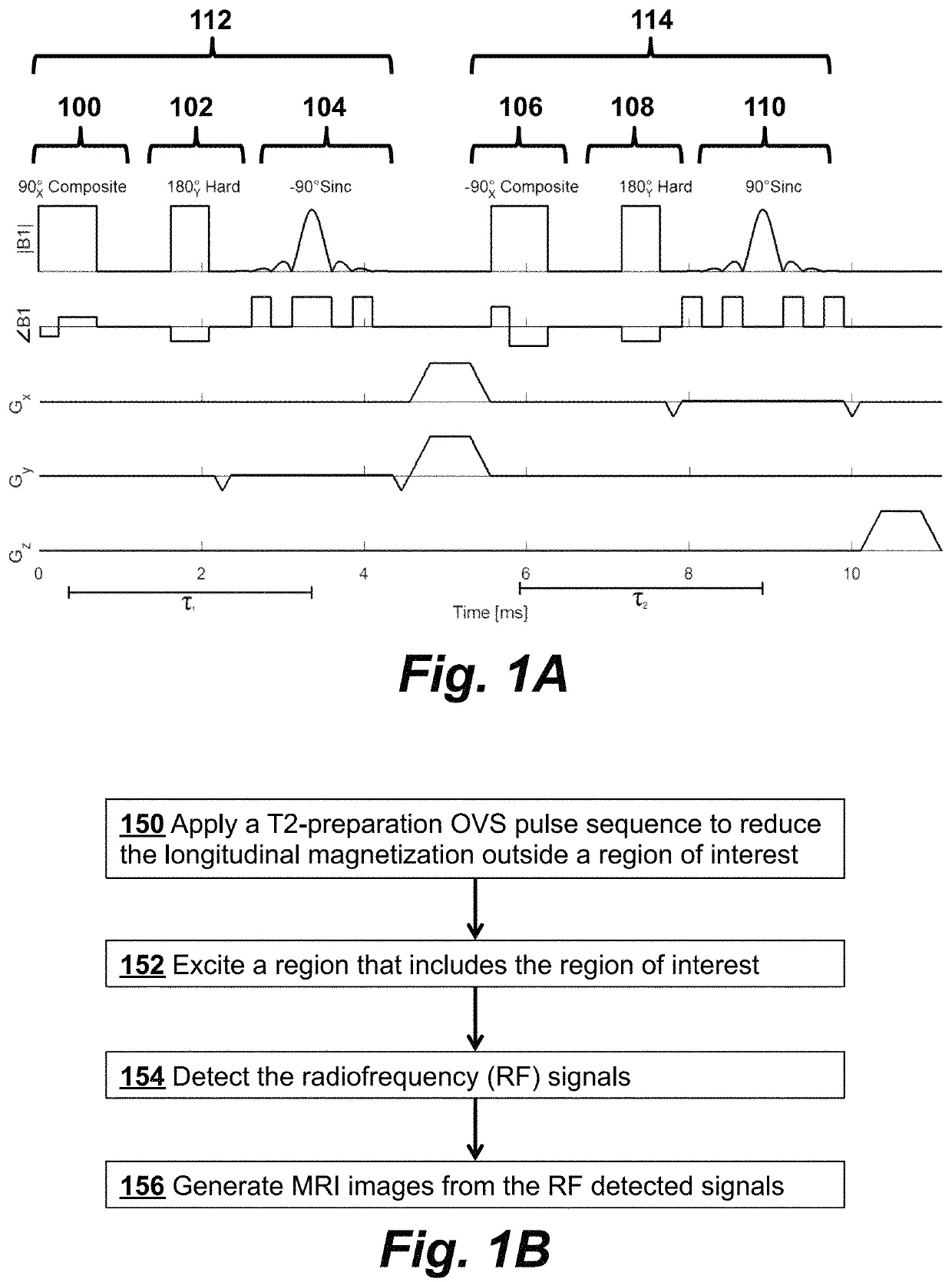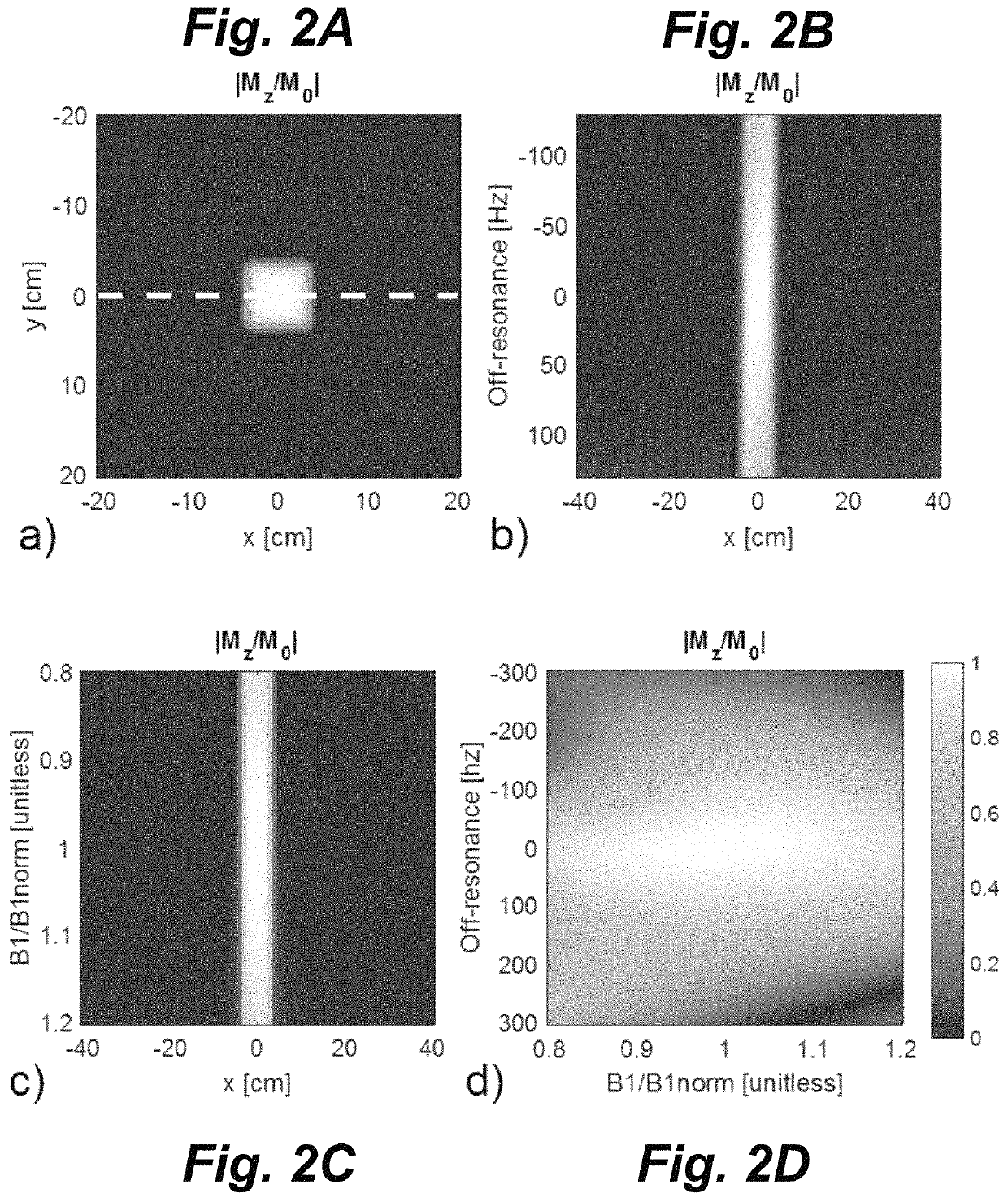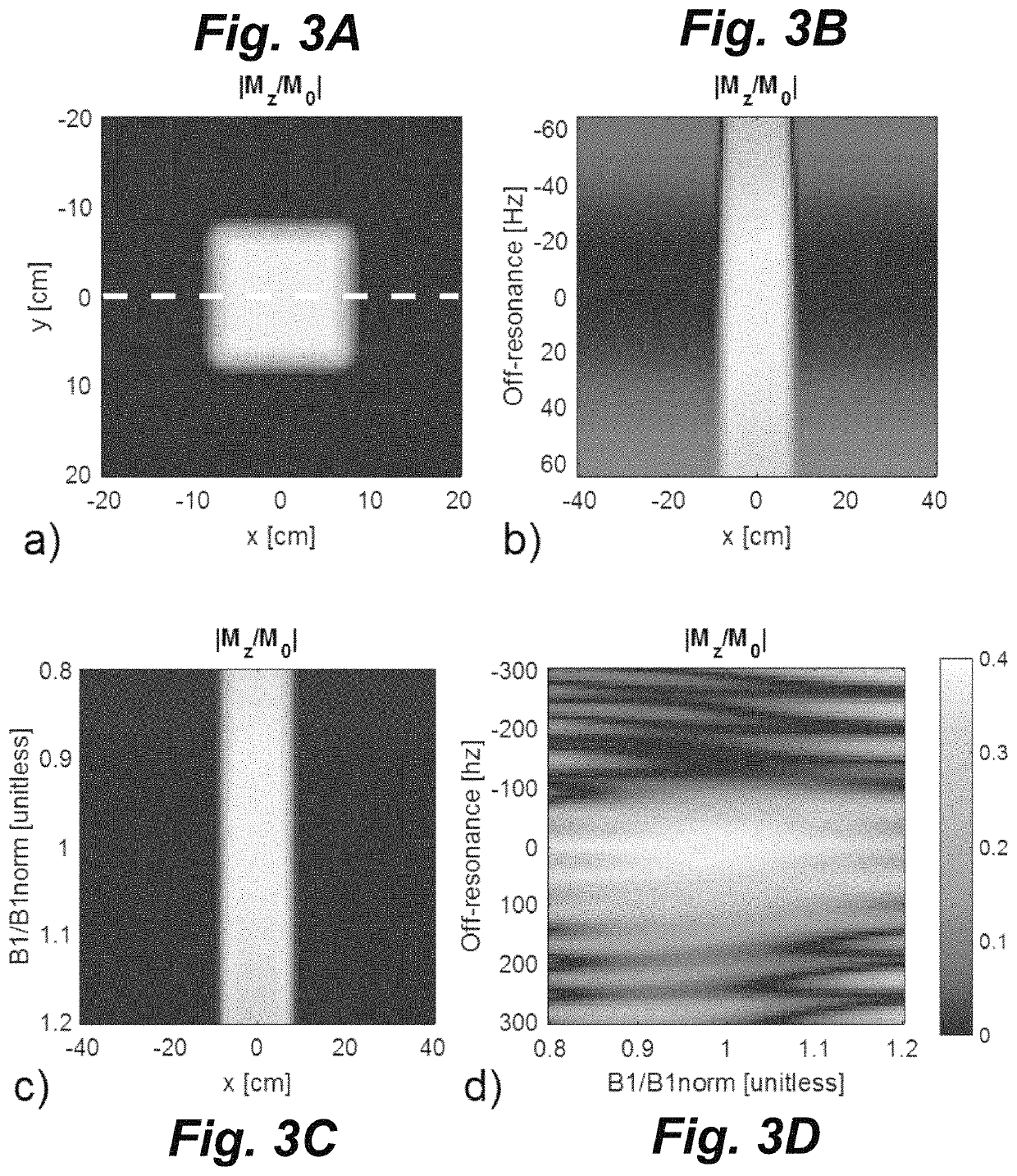MRI RF pulse sequence for multidimensional outer volume suppression
a pulse sequence and outer volume technology, applied in the field of magnetic resonance imaging, to achieve the effect of reducing scan time, improving image quality, and reducing scan tim
- Summary
- Abstract
- Description
- Claims
- Application Information
AI Technical Summary
Benefits of technology
Problems solved by technology
Method used
Image
Examples
Embodiment Construction
[0030]FIG. 1A is a timing diagram of an example APEX pulse sequence with sinc tip-up, according to an embodiment of the invention. The sequence has a first half 112 and a second half 114.
[0031]The first half of the sequence plays a 90° composite tip-down pulse 100, a 180° orthogonal hard refocusing pulse 102, and a selective −90° spatial sinc tip-up pulse 104 with appropriate timings for an echo time of τ1. The remaining transverse magnetization is spoiled. The second half negates in amplitude the tip-down and tip-up pulses, with echo time τ2. Specifically, the second half of the sequence begins with a tip-down pulse 106 that is an amplitude-negated version of the first tip-down pulse 100 to tip in the opposite direction. The refocusing pulse 108 is the same as 102 and the selective tip-up pulse 110 is independent of the first selective tip-up pulse 104. The remaining transverse magnetization is again spoiled. The combined effects of the two selective tip-up pulses 104 and 110 deter...
PUM
 Login to View More
Login to View More Abstract
Description
Claims
Application Information
 Login to View More
Login to View More - R&D
- Intellectual Property
- Life Sciences
- Materials
- Tech Scout
- Unparalleled Data Quality
- Higher Quality Content
- 60% Fewer Hallucinations
Browse by: Latest US Patents, China's latest patents, Technical Efficacy Thesaurus, Application Domain, Technology Topic, Popular Technical Reports.
© 2025 PatSnap. All rights reserved.Legal|Privacy policy|Modern Slavery Act Transparency Statement|Sitemap|About US| Contact US: help@patsnap.com



